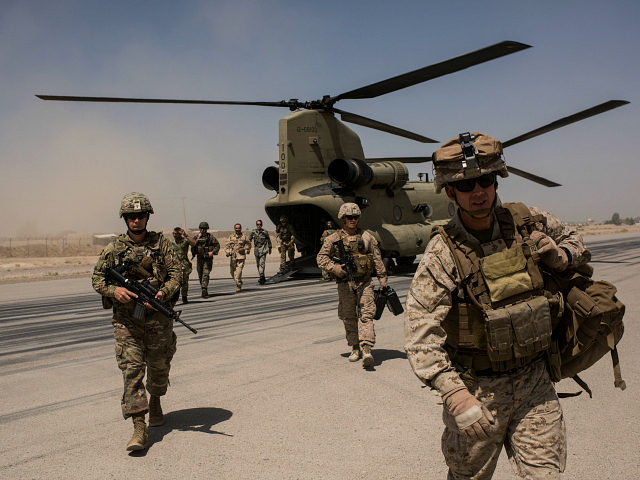U.S. military air crashes killed 47 American service members in Afghanistan over the past year, exceeding the 31 who perished in combat during the same period, the Task & Purpose news outlet found.
Task & Purpose compiled data on deadly accident incidents involving the U.S. armed forces in Afghanistan, noting that American military airpower may be in the midst of a crisis.
The Pentagon appears to disagree with the suggestion that the U.S. military is facing an air crash crisis.
Asked about the recent “wave” of air incidents that have killed 14 service members since the beginning of March alone, Marine Lt. Gen. Kenneth F. McKenzie Jr., the director of the Joint Staff, told reporters at the Pentagon on April 5:
I would reject “wave” and “crisis.” Those are mishaps that occurred. We’re going to look at each one in turn. Each one is tragic. We regret each one. We’ll look at them carefully. I’m certainly not prepared to say that it’s a wave of mishaps or some form of crisis. No, I’m not prepared to say that … I’d say mishaps happen in military aviation any time you’re flying complicated machines in situations where you’ve got less than total visibility and doing things that are difficult to do.
Mishaps are inevitably going to occur. We don’t want any mishaps to occur. One mishap is too many. But I’m not prepared to say right now that this is some kind of crisis.
The U.S. military has intensified air operations under American President Donald Trump.
Marking a significant shift from his predecessor, President Trump authorized the military to target the Afghan Taliban’s skyrocketing heroin and opium operations, which the U.S. Department of State recently noted provides “65 percent” of the group’s terrorist funding.
Munitions dropped on jihadists in Afghanistan under President Trump (about 5,208) have exceeded those launched during the three years preceding his inauguration (2014, 2015, 2016) combined, U.S. Central Command (CENTCOM) data shows.
In February 2018 alone, the U.S. military launched 469 airstrikes, a record high since 2012 — second only to the 653 dropped in October of last year.
It appears that the U.S. armed forces are currently doing more with less. While the United States is dropping more bombs, it is flying fewer sorties, according to the CENTCOM figures.
Last year, the American military dropped 4,361 bombs and carried out a total of 4,603 sorties.
In comparison, the United States only launched 2,365 strikes during the 12,978 sorties it flew in 2014, the last U.S. combat year of the ongoing Afghan war.
Former U.S. President Barack Obama declared the American combat mission in Afghanistan over at the end of 2014.
Under President Trump, the number of sorties has significantly dropped while the rate of airstrikes has skyrocketed.
Since the U.S. and Afghan forces began an offensive against the Taliban’s economic engine — its opium operations — in November 2017, “the campaign has conducted 75 strikes against narcotics production facilities in Afghanistan and continues to remove revenue from the Taliban criminal network,” reveals the American-NATO mission in a statement.
The U.S. military has persisted with its counternarcotics airstrike campaign after the U.S. Special Inspector General for Afghanistan Reconstruction (SIGAR), a watchdog agency, found that “it would takes three or four days to replace a [drug] lab in Afghanistan.”
U.S. Maj. Gen. James Hecker, the commander of the 9th Air and Space Expeditionary Task Force-Afghanistan, declared, referring to the anti-opium campaign:
The Taliban will have no safe havens. We will continue to exploit their networks and decimate their ability to develop narcotics. They have become a criminal organization that profits from selling drugs and using those funds to conduct operations that maim and kill Afghans. By cutting off the Taliban’s economic lifelines, we also reduce their ability to continue these terrorist activities.
SIGAR also suggested the cost of carrying out the airstrikes on the heroin labs may outweigh the outcome.
Despite the record number of airstrikes, the Taliban continues to control a significant portion of Afghanistan, and the country remains the world’s top producer of opium and heroin.
As of October 2017, the Taliban controlled or contested about 45 percent of Afghanistan.
Despite the nearly $8.5 billion the United States has invested in counternarcotics operations in Afghanistan since the war started in October 2001, the country is currently producing opium at a historic rate.

COMMENTS
Please let us know if you're having issues with commenting.